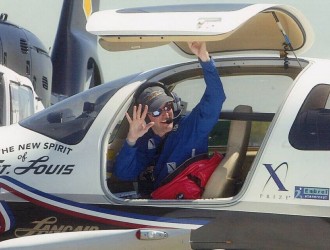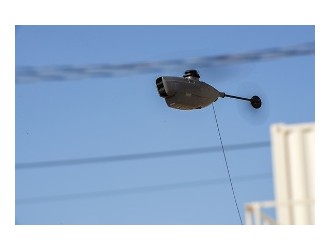On 28 October 1971, the bullet-shaped Black Arrow rocket blasted into the clear sky over the desert plain at Woomera in southern Australia. This launch of the British Prospero satellite into orbit was the culmination of more than 10 years of rocket development.
The mission could have marked the beginning of a new era for Woomera as a major global space port, perhaps making it as famous as Nasa’s Cape Canaveral or Russia’s Baikonur Cosmodrome. But history didn’t work out that way. The British launcher programme was cancelled and the desert launch complex, some 500 kilometres (310 miles) north of Adelaide, was eventually abandoned.
“It’s basically a big patch of nothing,” says Michael Smart, professor of hypersonics at the University of Queensland in Brisbane. “In the 60s and early 70s it was a fully-fledged space centre but after 50 years it’s faded away.”
Woomera has remained in use as a military test range for artillery, missiles and aircraft but now Smart is using the isolated site to test a brand new generation of scramjet spacecraft.
Developed in the 1960s, and first successfully flown in the ’90s, scramjets are air-breathing engines that only work at hypersonic speeds – greater than five times the speed of sound or Mach 5. Like jet engines, scramjets pull in air, and use it to burn fuel to produce thrust. wheras jets use turbines to compress the air, however, scramjets have no moving parts. Instead, the hypersonic speed of the aircraft is enough to compress air within the motor.
But you can see the problem: a scramjet needs some other form of propulsion to get it to Mach 5. As a result, scramjets have become something of a well-studied technology in search of a practical application.
“That’s really the limitation that’s held back scramjets for many years,” says Smart, speaking on stage at the BBC Future World Changing Ideas Summit in Sydney. “You’ve already got to be going at hypersonic speed before a scramjet works but, once you get there, it’s by far the most efficient type of engine.”
To reach these hypersonic speeds, Smart plans to combine an uncrewed scramjet with conventional rockets. He believes his Spartan launch system could radically reduce the costs of blasting satellites into orbit.

“All conventional satellite launch systems use different stages,” says Smart. “There’ll be a first stage rocket that normally gets up to Mach 5 or 6, you’ll have a second scramjet stage that goes two thirds of the way to space and you’ll have a final upper stage that takes the satellite into orbit.”
On the launchpad, Spartan will look and launch like a conventional rocket. once it reaches hypersonic speeds, however, the first stage will dro away and the scramjet will unfurl its wings to blast the spacecraft into the upper atmosphere. When it runs out of air, the scramjet will separate and a small conventional rocket will carry the satellite into space.
As much of the Spartan system as possible is designed to be reusable. Both the scramjet and first stage rocket will fly themselves back to a runway landing – although the scramjet will undoubtedly look sleeker.
“once the rocket booster has finished its job we deploy wings and a small propeller and fly back to base,” says Smart, “It’s basically just a big tin can, it’s very light. It’d be like a small ugly aircraft.”
The only part of the launch system that will not survive the flight is the final third stage, which will burn up in the atmosphere after releasing its payload into orbit.
Over the past couple of years, Smart has been carrying out hypersonic tests with a rocket and a two-metre-long scramjet at Woomera – flying the aircraft at hypersonic speeds 400 kilometres across the desert. “It’s the best ever radio controlled plane,” admits Smart, although it’s way too fast to control with a joystick. “We pre-prepare all the flight software, press the button and off it goes.”
Although Smart’s goal is to get Australia back into the satellite launch business, hypersonic aircraft hold the promise of radically reducing flight times on Earth. Most aerospace journalists have written a story on hypersonic travel, promising flights from London to Sydney in two hours, and there have been several proposals to help realise that dream. But could combining conventional rockets and scramjets be the answer instead?
“If we can prove scramjets as a useful technology to put passengers in space then they’ll be other ideas about how to use them, and flying Sydney to London might be one of those,” Smart says. “But I’m not sure that a scramjet-powered vehicle boosted by a rocket is the solution.”
Smart could, however, imagine the system being used for space tourists, another potentially lucrative application. Although, he’s not convinced that he would want to volunteer.
“I’d fly in a scramjet, it’d be like a very fast aircraft,” says Smart. “It’s the rocket I’d be worried about… it’s the getting to Mach 5 that’s the most dangerous part.”
With further tests at Woomera planned for next year, the eventual aim is to scale-up the system with a launch site on the north coast of Queensland. With the technology largely proven, all the team needs is money.
“Up until now we haven’t really found our way in Australia to develop hi-tech projects like this,” says Smart. “We’re doing our very best to make this happen by working with small companies but also working with government as well. Government definitely has a role to pick some winners and lay the groundwork for us to flourish.”
Some 45 years after that first, and last, Black Arrow flight from Woomera, Smart is determined to get Australia back in the space business.
“It’s not going to require billions and billions of dollars to develop,” he says. “I think it’s something that a country like Australia could easily do and it’s the sort of thing that we should be doing.”





